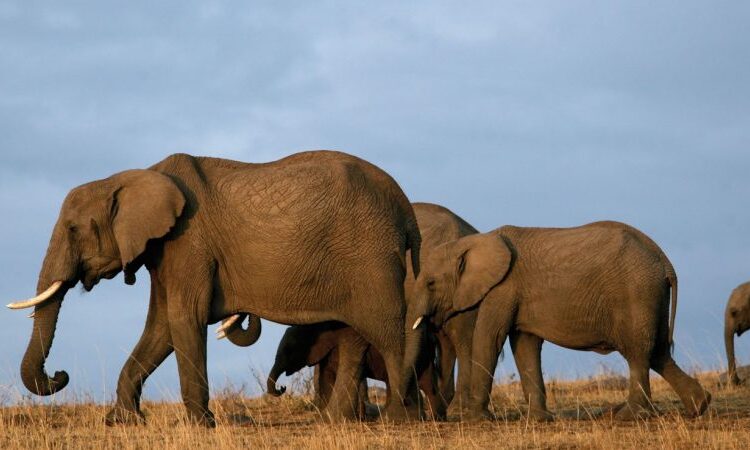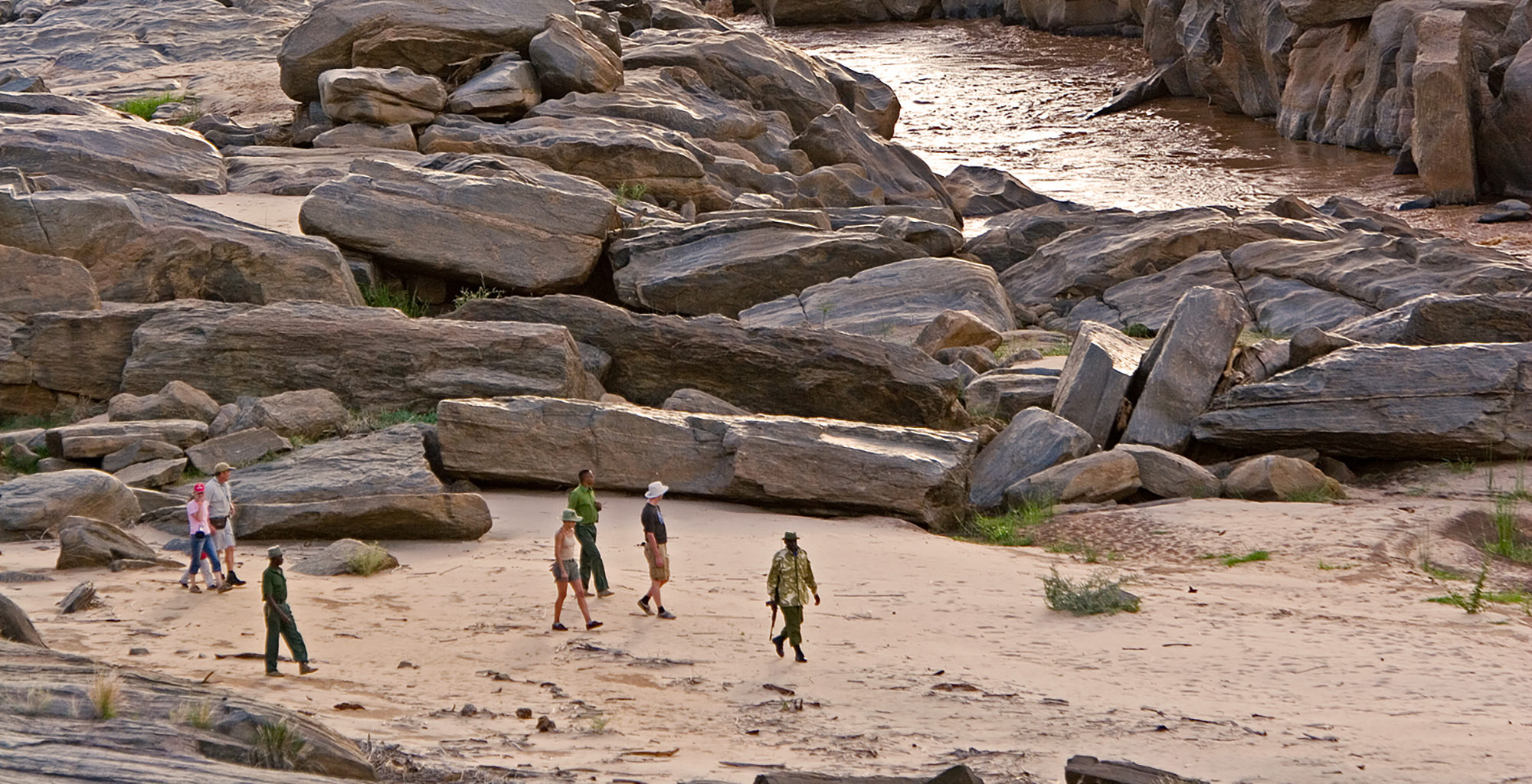What can you see in Tsavo East National Park? Tsavo East National Park is one of Africa’s biggest wildlife parks, is situated midway between Nairobi and Mombasa. The Galana River flows through the Park, providing this arid region with much-needed water. There are some of Kenya’s biggest herds of elephants. Some of the highlights and attractions in Tsavo East National Park include the following: sizable group of elephants rolling and bathing in red dust. Mudanda Rock is a rock which is positioned above a natural dam, it draws a lot of elephants every day that come to drink. The Galana River is home to the Lugard Falls, which cascade over some fascinatingly sculpted rocks. Horseback riding, trekking, rock climbing, and game drives are among the kenya safari tour activities available at Tsavo East National Park.

How to get to Tsavo East National Park
The main entrance of the park is at Mtito Andrei located on Mombasa Road about 233 kilometres (144 miles) from Nairobi. The campgrounds and private lodges in Aruba, Satao, Sala, Ithumba, Sangayaya, Mopeo, and Bachuma have their own private airstrips because of the vastness of the area. Tsavo East is the oldest national park in Kenya. There are the biggest elephant herds in the country as well as sizable prides of lions. The region gained notoriety in 1898 when two lions known as the Man-eaters of Tsavo killed over 130 people while constructing the railway line. Today’s visitors can see the enormous prides of lions that reside in the Tsavo National Park.
One of the park’s most recognisable features is the Yatta Plateau, the longest lava flow in the world at nearly 300 km (185 miles). Another impressive site is the Lugard Falls, where the Galana River cascades over a sequence of rapids created by strangely shaped boulders. The Park offers a traditional safari experience; the best places to watch wildlife are usually those that are close to water sources, such as the Aruba Dam. The park is home to a substantial population of giraffe, zebra, impala, and gazelles in addition to the fierce buffaloes. Masculine land mammals at their fastest, including large prides of Lions and the elusive Leopard.
Yatta Plateau
The Athi River forms the northwest boundary of the park, and the Yatta Plateau is situated near it. Numerous lodges, campsites, and tented camps can be found there, all of which offer breath-taking views of Tsavo. Baobab (Adansonia digitate) stands dot the Yatta Plateau, which is enveloped in a thick mist. While there are a few scattered seasonal ponds, bogs, and dams, permanent water sources are few. Western regions receive approximately 450 mm of rainfall daily, on average, whereas the driest east region may only receive 250 mm. As a result, the west generally has denser vegetation.
The world’s longest lava flow, the Yatta Plateau, is one of Tsavo East National Park’s most fascinating features. Overlooking the majestic Athi River and River Tiva, the plateau stretches 290 km along the western edge of the park, having been formed during Ol Doinyo Sabuk Mountain’s eruption process. The park’s scenic landscape is enhanced by the plain, broad, and shallow valleys of the Tiva. There are a lot of flat thorn shrubs in the Yatta Plateau. The plateau’s western flanks are dotted with hills, crater mountains, and enormous outcroppings that provide stunning views.
Mudanda Rock
Mudanda Rock lies in the southwest scrublands of Tsavo East National Park, a short drive south of the Manyani gate. It is believed that the nearby tribes once used the Precambrian Mudanda rock as a vantage point and a place to dry meat strips. It is currently one of the park’s vantage points where visitors on a Kenya safari can enjoy a walking safari, offering 3600 views from its peak. The 1.6 km long Inselbergs known as Mudanda Rock collects water for a natural dam and offers a superb viewing platform for the hundreds of elephants and other wildlife who come to visit in the dry season.
Mudanda Rock is a large pinkish-red stone with steps carved into its gigantic flank that rises out of the foliage. Precambrian basement rock, or Mudanda rock, dates from approximately 570 and 4,550 million years ago. Elephants and leopards enjoy it, and the Waliangulu hunter-gatherers utilised it hundreds of years ago as a location to dry their elephant flesh, which is how the term “Mudanda,” which means “the place of dried meat,” came to be. This 1.6 km long granite outcrop has a water hole on its eastern side, albeit it periodically dries up. The rock makes it easier for guests to see the many wildlife species while on safari and acts as a fantastic lookout for the animals during a Kenya safari. When enough rain falls on the rock, it can create a large volume of water, which is what fills the dam.
Lugard falls

Lugard Falls, one of Tsavo East National Park’s most beautiful sights, is a thrilling experience for guests on a Kenya walking safari, created by the Galana River. There are several white water rapids at Lugard Falls. The name Lugard Falls honours Fredrick Lugard, a British explorer and colonial administrator who arrived in Mombasa early in 1888.
Birdwatching in Tsavo East National Park
Top of the list if you’re looking for an amazing bird habitat in Kenya is Tsavo East National Park. It’s considered one of the best sites in Kenya to go birdwatching, with over 500 different species of birds living there. Tsavo East National Park is home to a wide variety of bird species, including female eastern paradise goshawks, kestrels, buzzards, starlings, weaver birds, ostriches, autocephalous goshawks, golden pipits, martial eagles, Rufous chatterer, slender-tailed nightjars, Somali bee-eaters, Shelley’s starling, African Finfoot, and many more. These birds are both migratory and resident; the latter group visits Tsavo East National Park from November to April. Species that migrate have their origins in northern Africa and Europe.
Wildlife in Tsavo East National Park
Elephants, leopards, cheetahs, buffalos, black rhinos, gazelles, impala, aardwolves, Grevy’s alongside plain’s zebra, warthog, waterbucks, warthogs, civet, dik-dik, caracal, African wildcat, African hunting dog, duikers, eland, African dormouse, stripped as well as spotted hyena, tree hyrax, black-backed and side stripped jackal, lesser kudu, gazelles, small spotted genet, greater galago, bat-eared fox, African hare, species of mongoose like banded mongoose, dwarf mongoose, Egyptian mongoose, marsh mongoose, slender mongoose, and white-tailed mongoose, and species of duikers like bush duiker, red duiker, and blue duiker, among others.
Rivers in Tsavo East National Park
Tsavo East National Park’s topography is shaped by the Tsavo and Galana rivers, two of the park’s main water sources and contributors to the environment. Before joining the Athi River to form the Galana River, the Tsavo River passes through the two national parks of Tsavo, Tsavo East and Tsavo West. The Galana River rises in the southeast Kenyan highlands and flows through Tsavo East National Park before emptying into the Indian Ocean. In Tsavo East National Park in Kenya, crocodiles can be seen on safari since they are abundant in the Galana River.


